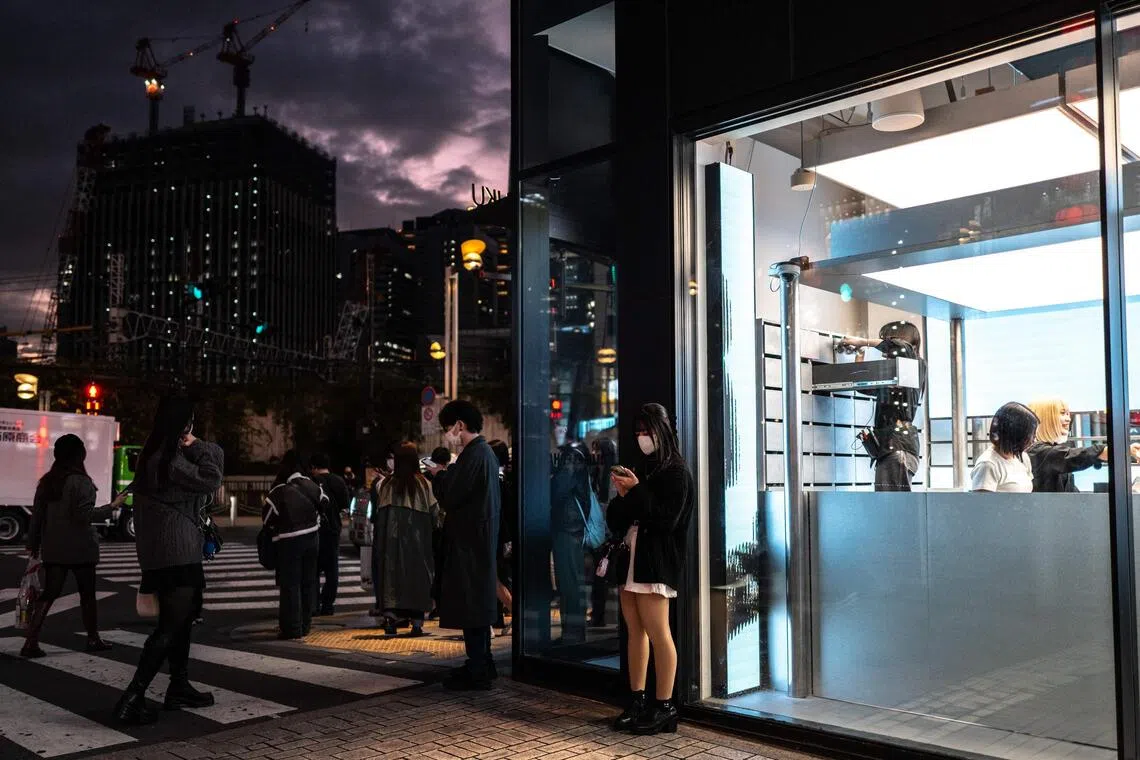Japan’s low-crime image cracking as car thefts, home intrusions rise
Sign up now: Get ST's newsletters delivered to your inbox

According to provisional data from the National Police Agency, the number of car thefts from January to June 2025 reached 3,821.
PHOTO: AFP
Follow topic:
TOKYO - Japan has often prided itself on its orderly, low-crime society, but cracks in that image are widening amid rising car thefts and home intrusions fuelled by export markets and public complacency.
At a seminar in May on car theft held by the Aichi prefectural police in central Japan, a man in his 50s listened intently – he was twice targeted in the past.
When he woke up one morning in 2011, his prized Toyota Land Cruiser had vanished. Then, one night in 2015, he found a bicycle blocking his entrance, making it difficult to open the door. His car was still there, but a large square hole had been made in the body. The internal wiring had been burned out, resulting in repairs costing more than 100,000 yen (S$830).
According to provisional data from the National Police Agency, the number of car thefts from January to June 2025 reached 3,821, up 29.2 per cent from a year earlier.
Aichi Prefecture, the heartland of Toyota Motor, recorded the highest figure with 639 cases, a 50.4 per cent increase from the same period in 2024. Saitama, near Tokyo, with 479 cases was up 14.6 per cent, and Kanagawa with 396 cases was up 66.4 per cent.
Some prefectures also saw significant increases, such as Shizuoka, the birthplace of Honda Motor, and also in central Japan, with 165 cases, 6.6 times the previous figure, and Nagano with 63 cases, 2.9 times higher.
The recent rise in car prices inside and outside Japan is driving the thefts, according to a senior Aichi police official.
Organised car crime is now big business, with specialised roles for scouting, stealing, dismantling and reselling vehicles. Thieves can make off with a car in a matter of minutes with a Controller Area Network, or “CAN invader” in Japan, which can unlock doors and start the engine.
Some stolen vehicles are fenced at salvage yards where they are dismantled and shipped overseas in containers and then reassembled for sale.
“Auto theft leaves few traces and is a high-return crime where the value of the stolen goods is guaranteed,” said an Aichi police official. “Even if we are fortunate enough to track the vehicles down, they may already have been exported overseas.”
The more security measures there are, the harder it is to steal a car. However, of the roughly 200 cases from January to March, over 60 per cent of victims did not have multiple security measures, police said.
The man who had his car targeted twice had only used a car alarm. Now he has two security cameras synced to his smartphone, and he parks his car front-first with the wheels turned sharply to make it more difficult to back out.
Home invasions have also become a serious issue. A rural Aichi woman in her 40s who had never thought of home security was shocked when her home was targeted twice in one month.
Her husband would leave his work bag containing a money pouch in the living room, but one day in mid-March, the cash was gone. There were no signs of forced entry or any evidence that the room had been ransacked.
About two weeks later, another 50,000 yen disappeared from the pouch. Police are investigating it as a break-in.
The woman would lock a sliding glass door in the home at night, but frequently left it unlocked during short daytime outings.
She knew “yami baito” robberies, in which perpetrators are recruited online, had been on the rise in the Tokyo metropolitan area. But that was someone else’s concern.
“I wasn’t very vigilant with security,” she said. “I knew I should be cautious, but living in a quiet rural area, I didn’t feel a strong sense of danger.”
The family now locks the doors without fail and has installed home security cameras.
The provisional figure for home burglaries from January to June reached 8,898, the highest for the period in the past five years. Saitama led the ranking by prefecture with 959 cases, followed by Chiba with 683, Ibaraki with 672, and Aichi with 665.
Many incidents involved unlocked doors or broken glass, and pose a risk of escalating into “brazen burglaries”, where intruders assault and rob residents. Burglars sometimes case homes, posing as plumbers or contractors to gather information about family composition and floor plans.
“By taking basic precautions like locking doors, many incidents can be prevented,” said Mr Masaki Takeuchi, an official in the Aichi police’s community safety division.
He also recommends using alarms and locks on windows, gravel that that makes noise when walked on, motion-activated lights and security cameras, and security glass. KYODO NEWS

